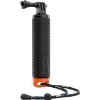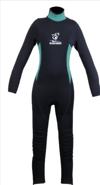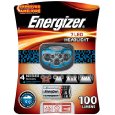Malaysia is where traditional culture meet modernity and its geography reflect this contrast. West Malaysia borders Singapore and Thailand, and has the capital Kuala Lumpur - a melting pot of different cultures and religions. With a mixed population of Muslims, Hindus and Chinese, KL offers a variety of culture like no other Asian city! The food is amazing, the shopping a paradise and the layout of the city is great for exploring by foot.
Going north you will find the modern islands of Penang and Langkawi, while 2 hours south you find Melaka, a UNESCO world heritage site and the main port from the historical use of the Straits of Malacca. Closer to the Thai border are the picturesque Perhentian Islands (meaning ‘place to stop’), offering great snorkelling and a chilled beach vibe. East Malaysia comprises of the northern part of Borneo and is less developed but has untouched nature and some of the best scuba diving in the world. Kota Kinabalu is the gateway to discovering the East - meeting tribes, visiting traditional villages, rock climbing, hiking Mount Kinabalu for sunrise, exploring national parks like Mulu’s giant cave system or diving under Sipadan island - one of the best dive spots in the world! Malaysia’s tagline is Truly Asia and truly, it does not disappoint.
Malaysia is a tropical country, so lovely warm weather is almost inevitable year-round. In general, temperatures don’t drop below 26°C/78.8 °F (or a refreshing 17°C/62.6 °F at night in the highlands). You won’t have to worry about much cooler temperatures unless you plan on ascending Mount Kinabalu, where it does occasionally fall below 10°C/50 °F.
Travelers to Borneo and the country’s east coast must be wary from October to February, the time of the heavy, flood-inducing north-east monsoon, quite a deterrent to travelers. The opposite is true from April to October, when the milder south-west monsoon drenches the southern parts of the peninsula, including Kuala Lumpur. However, the rainy season for the southwest isn’t necessarily a signal for travelers to stay away, as it is significantly more mild and tends to bring brief and predictable afternoon thunderstorms with the occasional odd downpour, which could actually be a welcome relief to travelers.
Wet Season
November — March
Average temperature
91–74 °F
33–24 °C
Average number of rainy days 20
Dry Season
May — September
Average temperature
91–75 °F
33–24 °C
Average number of rainy days 10
Average temperature
Average number of rainy days
The following links are affiliate links to Amazon.com or other local Amazon web stores - it depends on your location. The listed prices of all items are the US Amazon store prices at the time of publishing. If you are visiting us from outside the USA and there is an analogous item in your local Amazon web store, you'll be redirected there automatically. We do our best to keep all prices and descriptions up to date, but if you find any errors or inaccuracies, don't hesitate to contact us using our feedback page!
Recommended Travel Guides4
City walking10 items
Regardless of your reasons for traveling to Malaysia, you’ll most likely spend a few days in the capital, Kuala Lumpur, and in some other famous places like Malacca and Georgetown. These two gems are famous for their plentiful history and culture as well as their unique gastronomy - a mixture of Malay, Chinese and Indian cuisines.
Kota Kinabalu and Kuching are the capitals of Sabah and Sarawak states respectively, as well as gateways to Borneo’s national parks and other cities like Ipoh (a colonial-style capital of Perak) and Johor Bahru (the gateway to Singapore). Malaysia is a traditional Islamic country, so respectful clothes are necessary for both men and women. To fully enjoy city walking, you might need a few items to make your exploring more comfortable.
-
Good daypack
-
Sunglasses
-
Face sunblock
-
Body sunblock
-
Hats
-
Camera (portraits and city views)
-
Portable battery charger (for your phone and camera)
-
Facial cleansing wipes
-
Hand wipes
-
Rain poncho and travel umbrella
Rain ponchos and umbrellas are must-haves in Malaysia! If you come from a place where it rains sparsely, you’ll be amazed at how heavy rain can be in Malaysia. Honestly, it’s usually easier to stop by a cafe or store and wait until it’s over. However, for the times you don’t have that opportunity, it’s imperative to keep a light rain poncho and a small umbrella in your backpack.
Beaching10 items
Malaysia is renowned for its beautiful islands and beaches, and it’s easy to enjoy relaxing and chilling out on its striking coasts. Since it’s a tropical country and lies near the equator, the sun is brutal. Be prepared for this and bring some things which will allow you to get a beautiful tan, but not burns!
-
Body sunblock
-
Face sunblock
-
Sun oil
-
After sun care
-
Moisturizing spray
-
Sunglasses
-
Hats
-
Portable shade for the beach
This thing is extremely important, as you cannot always find natural shade on islands.
-
Hand wipes
-
UV protection shirts
 O'Neill UV Sun Protection Men's Basic Skins Long Sleeve Crew Rashguard$24.14
O'Neill UV Sun Protection Men's Basic Skins Long Sleeve Crew Rashguard$24.14 O'Neill UV Sun Protection Men's Basic Skins Tee Rashguard$24.95
O'Neill UV Sun Protection Men's Basic Skins Tee Rashguard$24.95 O'Neill UV Sun Protection Women's Basic Skins Long-Sleeve Rashguard Top$17.96
O'Neill UV Sun Protection Women's Basic Skins Long-Sleeve Rashguard Top$17.96 O'Neill UV Sun Protection Women's Basic Skins Short-Sleeve Crew Rashguard Top$17.99
O'Neill UV Sun Protection Women's Basic Skins Short-Sleeve Crew Rashguard Top$17.99 Speedo Kid's UV Long Sleeve Sun Shirt$18.95
Speedo Kid's UV Long Sleeve Sun Shirt$18.95
Snorkeling6 items
Beaches are not only for relaxing and soaking up the sun - Malaysia is one of the top destinations for snorkeling and scuba diving worldwide! The exotic Sipadan island holds a place in the top ten world scuba diving destinations. This treasure trove promises amazing underwater adventures featuring turtles, sharks, a huge variety of fish and countless other sea creatures you won’t want to miss.
-
Snorkeling set: fins, mask, tube
-
UV protection shirts
 O'Neill UV Sun Protection Men's Basic Skins Long Sleeve Crew Rashguard$24.14
O'Neill UV Sun Protection Men's Basic Skins Long Sleeve Crew Rashguard$24.14 O'Neill UV Sun Protection Men's Basic Skins Tee Rashguard$24.95
O'Neill UV Sun Protection Men's Basic Skins Tee Rashguard$24.95 O'Neill UV Sun Protection Women's Basic Skins Long-Sleeve Rashguard Top$17.96
O'Neill UV Sun Protection Women's Basic Skins Long-Sleeve Rashguard Top$17.96 O'Neill UV Sun Protection Women's Basic Skins Short-Sleeve Crew Rashguard Top$17.99
O'Neill UV Sun Protection Women's Basic Skins Short-Sleeve Crew Rashguard Top$17.99 Speedo Kid's UV Long Sleeve Sun Shirt$18.95
Speedo Kid's UV Long Sleeve Sun Shirt$18.95 -
GoPro camera
-
GoPro LCD display
-
Hand buoy
-
Anti fog pads
Scuba diving7 items
Of course, you can rent some of the equipment necessary right at the beach. However, the quality and condition of this leaves much to be desired. You definitely don’t need to bring your scuba tank or belts, but at least you can bring your own snorkel equipment and wetsuit! Since the water is extremely warm, you can snorkel and dive in a long sleeve shirt and shorts or a bikini bottom. Though if you’re going to do proper, advanced diving, it might be a good idea to have a thicker wetsuit, since at the depth of 30 meters (e.g. Sipadan island) the water can get pretty chilly, not to mention staying underwater is more comfortable in a proper wetsuit.
-
Diving wetsuit
-
Snorkeling set: fins, mask, tube
-
GoPro camera
-
GoPro LCD display
-
Red filter (essential for deep blue water)
-
Hand buoy
-
Anti fog pads
Jungle trekking22 items
Malaysia is a prime destination for jungle trekking! Whether you’re travelling across the peninsula or heading to the lush, rainforested paradise of Borneo, there are a huge variety of options to explore the jungle, both short (1-day) and long (up to 3-4 days). If you love watching wildlife, don’t miss this unique chance to see hornbill birds, proboscis monkeys, orangutans, lots of diverse insects and spiders, and a plethora of other amazing creatures. One of the top destinations for trekking in Malaysia is Mulu National Park, where you can do a variety of treks and activities.
However, keep in mind that the rainforest is a huge ecosystem and every creature, even if it’s very tiny, can protect itself well! For example, leeches are not something you’d want to mess with. While it’s not the absolute worst experience you could have, it’s still highly unpleasant. Also, your typical hiking boots are not an option in the Malaysian rainforest due its very high humidity. Since normal hiking boots are made of leather, some organisms could find them attractive and move in there. If this happens, then after only a few days of trekking, you’ll basically need to throw them away.
When I was preparing for my first jungle experience, I searched far and wide to find the type of boots which would be the best for me. Then, I recalled that the US army had created jungle boots specifically for its soldiers when there was a war in Vietnam. I googled this and ended up buying a pair of these boots. After I did few treks in them, I realized that I had made a very smart choice. The boots are made with an artificial fabric and materials which get dry much quicker than normal hiking boots (which is ideal, considering humidity). They also have very good ankle support and they are tall, so you can wear your leech socks and you won’t be afraid of getting bitten.
Other items mentioned below are also musts for jungle trekking. Garbage bags, for example, could be very useful when you have a boat ride somewhere in the depths of the jungle. If you put all your bags in separate garbage bags and seal them with a sealing tape, it keeps them from getting wet if it’s raining. I usually use 2-3 garbage bags for each of my bags - a solution which costs much less than a raincover for your bags. Additionally, considering how heavy the rain in the Malaysian jungles can be, a raincover won’t really help you at all!
-
Good daypack
-
Waterproof bag
-
Anti leech socks
-
Jungle boots
-
Long hiking pants
-
Jungle rain poncho
-
Waterproof bags for camera and documents
-
Good binocular
-
Whistle
-
Torch and headlamp
-
Extra torch batteries
-
Lighter
-
Jungle knife
-
Sealing tape
-
Plastic bags
-
Rope
-
Adjustment to vertical peeing for girls
-
GoPro camera
-
Insect head hat
-
High DEET insect repellent
-
Antiseptic wipes
-
Waterproof bandage
Caving12 items
Borneo is famous for its elaborate cave systems. If you visit Mulu National Park, make sure to do some exploring in the caves. There are plenty of choices: you can opt for some easier ones with your kids, or take the hardest cave trek known as “Clearwater Connection.” This is a one-day trek through several caves, and it ends with swimming in an underground river. It’s an unparalleled experience for non-professional speleologists! You’ll see lots of bats, snakes, spiders and scorpions - fascinating endemic creatures which have never seen the light of day! Some parts of the route are tough and you’ll have to squeeze your body into very narrow openings, so be prepared for a worthwhile challenge.
-
Rubber boots
The cave route is pretty slippery, so you won’t want to wear your running or hiking shoes or trekking sandals. None of these will help you. Instead, a pair of rubber slippers is the best option to crawl through the caves.
-
Good socks
-
Waterproof bag
-
Grip gloves
You’ll need them. Some parts of the route are equipped with a rope, and since it’s very humid and dirty in the cave, your hands will be wet and grimy. It’s always safer to have grip gloves when sliding on a rope.
-
Torch and headlamp
-
Extra torch batteries
-
Lighter
-
Knife
-
Sealing tape
-
GoPro camera
-
Adjustment to vertical peeing for girls
-
Swimsuit
Mount hiking18 items
Mount Kinabalu is Borneo’s tallest (4101 m) mountain and one of the tallest mountains in all of Southeast Asia. Despite its stature, it’s actually quite an accessible mountain, and you don’t need to be an experienced climber to reach the summit. Simply prepare a few items you might need for the two days of trekking and get ready to live the story of a lifetime!
-
Good daypack
-
Jungle boots
-
Trekking poles
-
Trekking socks
-
Jungle rain poncho
-
Torch and headlamp
-
Extra torch batteries
-
Warm trekking gloves
-
Softshell jacket
-
Fleece beanie
-
Anti leech socks (if rain season)
-
Altitude sickness pills
-
Face sunblock
-
Antiseptic wipes
-
Waterproof bandage
-
Lighter
-
Knife
-
Good binocular
Surfing10 items
Frankly speaking, Malaysia is not a top destination for surfing. While it has some good surf spots, most of them are more suitable for skilled surfers. However, you can combine surfing with some other fun coastal activities, like going to the beach and snorkeling. A great place to do this would be the divine island of Tioman. For surfing, there are a few things you might need on hand.
-
UV protection shirts
 O'Neill UV Sun Protection Men's Basic Skins Long Sleeve Crew Rashguard$24.14
O'Neill UV Sun Protection Men's Basic Skins Long Sleeve Crew Rashguard$24.14 O'Neill UV Sun Protection Men's Basic Skins Tee Rashguard$24.95
O'Neill UV Sun Protection Men's Basic Skins Tee Rashguard$24.95 O'Neill UV Sun Protection Women's Basic Skins Long-Sleeve Rashguard Top$17.96
O'Neill UV Sun Protection Women's Basic Skins Long-Sleeve Rashguard Top$17.96 O'Neill UV Sun Protection Women's Basic Skins Short-Sleeve Crew Rashguard Top$17.99
O'Neill UV Sun Protection Women's Basic Skins Short-Sleeve Crew Rashguard Top$17.99 -
Face sunblock
-
Body sunblock
-
Waterproof bandage
-
Antiseptic wipes (if you have some small wounds, scratches)
-
Universal injury relief ointment
-
After sun care
-
Quadcopter with camera
-
GoPro camera
-
Quadcopter for GoPro
Vaccination7 items
Make sure you are up-to-date on routine vaccines before every trip. Don't forget to consult a doctor about necessary vaccination a few months in advance. Generally, these vaccines include the measles-mumps-rubella (MMR) vaccine, diphtheria-tetanus-pertussis vaccine, varicella (chickenpox) vaccine, polio vaccine, and your yearly flu shot. The following vaccination recommendations are taken from the Centers for Disease Control and Prevention (CDC) webpage.
Hepatitis A
Typhoid
Hepatitis B
Japanese Encephalitis
Malaria
Rabies
Yellow fever
First Aid Kit6 items
Of course, Malaysia is a country where you can have some qualified help. However, in some remote areas it will take a while to get proper treatment. Sometimes, not you but some of your traveling buddies might need help. Make sure you have something in advance against the following symptoms:
Wounds, traumas, cuts
Gastro problems like poisoning or heartburn
Allergic reactions on sun burn, bites of insects, unusual food
Fever and cold
Motion sickness
Strong painkillers



















































































Like this packing list
Like VacayKit